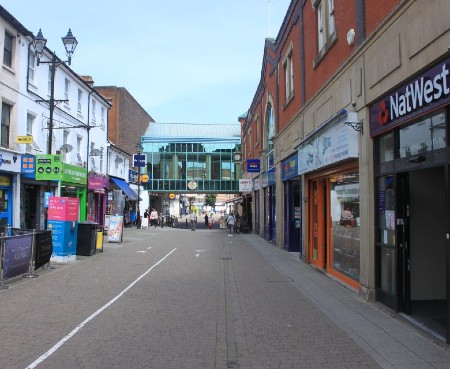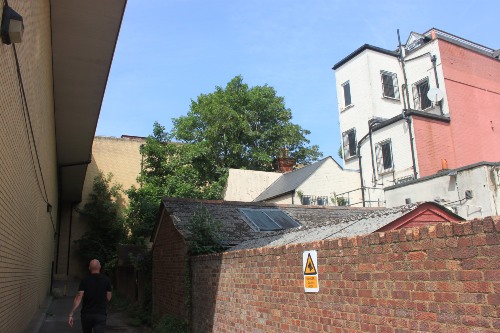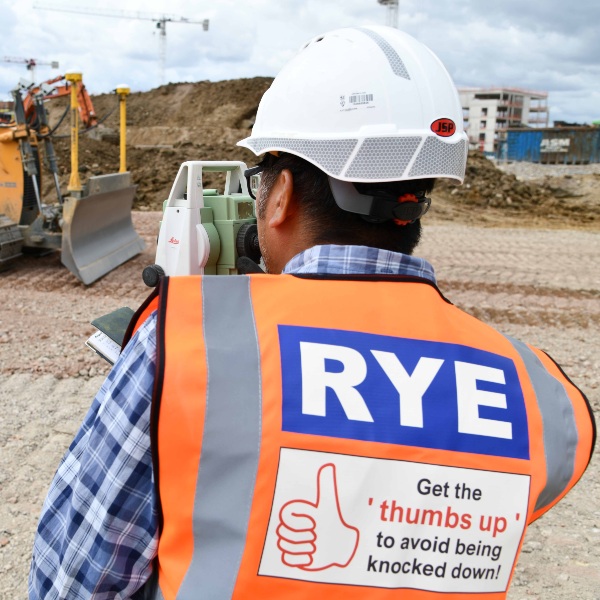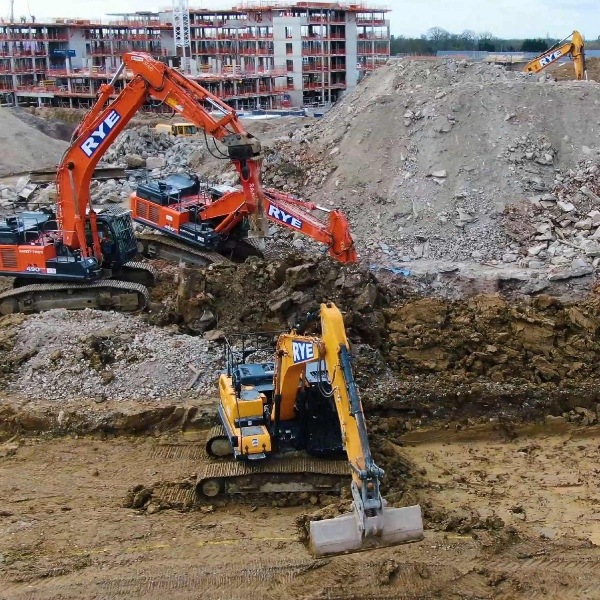The Complexities of Town Centre Demolition
- 22/12/21
This Q&A with our SHE and Operations Director, Ben Griffiths, was released to the media in December 2021.
The complexities of undertaking a large-scale demolition project in a busy high street environment
Rye Demolition has recently been awarded a contract from Rushmoor Borough Council as part of the Council’s large-scale plans to regenerate Aldershot town centre.
The demolition firm’s task – to demolish the Galleries and Arcade shopping centres, a multi-storey car park, and a link bridge between two shopping centres that spans over a busy high street – is highly challenging in terms of its technical requirements, necessary expertise, and potential for disruption to the public.
Can you describe some of the challenges associated with a demolition project in a busy high street?
The key word here is ‘busy’.
Any kind of demolition work comes with the risk of a certain amount of interruption, but that kind of challenge is magnified in the context of a high street like Aldershot’s.
Not only do we have to negotiate a consistently high footfall in general terms, but Aldershot also hosts local market stalls on Thursdays, which – given their open-air nature – we’re particularly keen to avoid disrupting.
In practical terms, this means that we need to carry out our works while accommodating the market stalls and shoppers in the local area, paying particular attention to issues like providing access, ensuring dust levels are safe, noise reduction, and vibration monitoring.

To what extent does this kind of project differ from those that take place in a less public environment?
Without question, the link bridge – and its many implications! – makes this project unique, particularly in the context of its position on the high street.
Our first phase largely revolves around removing the bridge. It’s a suspended pedestrian foot bridge which spans across Wellington Street – directly above the market traders.
In order to make sure we achieve this safely and with minimal disruption to the public, we’re going to carry out various aspects of the work overnight. For example, we’ll need to begin by completely wrapping the bridge with a protective scaffold screen and debris netting.
The next stage involves dismantling the bridge internally – as much as we can, at any rate – by burning through the existing steel structural support.
With that done, we’ll then complete the final removal of the structure by siting a crane on Wellington High Street (which, again, will be an overnight process) to lift the larger support beams to the ground.
You’ve mentioned that the bridge is a unique aspect of the project – has it been difficult to work out how to dismantle it?
It’s the kind of challenge we relish, really, and we’ve had to get a little bit creative in order to work out the safest and most efficient approach.
For example, we’ve actually taken the time to visit some local council archives to hunt down the original plans of the bridge from the 1990s.
Taking that kind of extra step towards understanding the site has allowed us to plan for as safe a removal as possible.
The bridge isn’t the only technically demanding aspect of the project, of course. When the main shopping centre demolition starts, we’re going to have to nibble at the concrete with our demolition excavator to get a real sense of how strong it is and update our plans accordingly.
That phase of the project will also give us an opportunity to make use of specialist equipment like our high reach demolition excavator, which we can use to tackle the upper levels of the shopping centre even from ground level.

Returning to the subject of safety: have there been any additional health and safety demands for a project of this nature?
The footprint of work here is enormous – the shopping centres, car park, and bridge all add up to a very substantial site.
As such, we’ve given extra thought to site security. We need to ensure that no unauthorised access can be made into potentially dangerous areas, and there are various methods that we can use to achieve this.
For one thing, we’re creating a temporary hoarding around the development in order to limit access, which we’re supplementing with a mixture of security guards, CCTV cameras, and other detection technology too.
There’s another aspect to safety and disruption: the adjoining properties. How have you navigated the owners of the surrounding buildings?
As with our research into the bridge, we’ve put a great deal of time and effort into exploring and understanding the many party walls – walls that are shared by other buildings.
In conjunction with that process, we’ve built up strong communication links with the residential and commercial properties that adjoin the shopping centre buildings, and our SHE team has been fantastic at engaging with those building owners to discuss specific access, building protections, or temporary parking restrictions we may need to adopt.
Of course, we try to carry out our work in phases, so whatever disruptions the demolition may cause will always be temporary for the locals.
Let’s talk about the local community: how has it been factored into this project?
We really began engaging with the local community from the word ‘go’.
Throughout the course of this project – bearing in mind it’s likely to take at least a year to complete – we wanted to make sure that the market will be able to function and that the main high streets will be able to stay open. That’s why, as I’ve mentioned, the more complex or high-risk works are being planned as overnight projects.
We’ve also phased the works so that any disruptions to parking, for example, are only temporary.
In fact, we’ve planned for further parking mitigations by keeping a managed, temporary car park functioning so there should always be spaces in the event that cars need to be momentarily moved elsewhere.
Plus, of course, we take pride in knowing that this project will ultimately benefit local residents and visitors.

Can you elaborate on what the long-term benefits of the demolition will look like?
It’s my understanding that, by clearing the existing buildings, we’re paving the way for a new development that is planned to attract more students, businesses, and homeowners to Aldershot.
I think the aim is to make the high street more experience focussed, with the aim of attracting more people, money, and diversification.
Memberships And Accreditation Partners

















